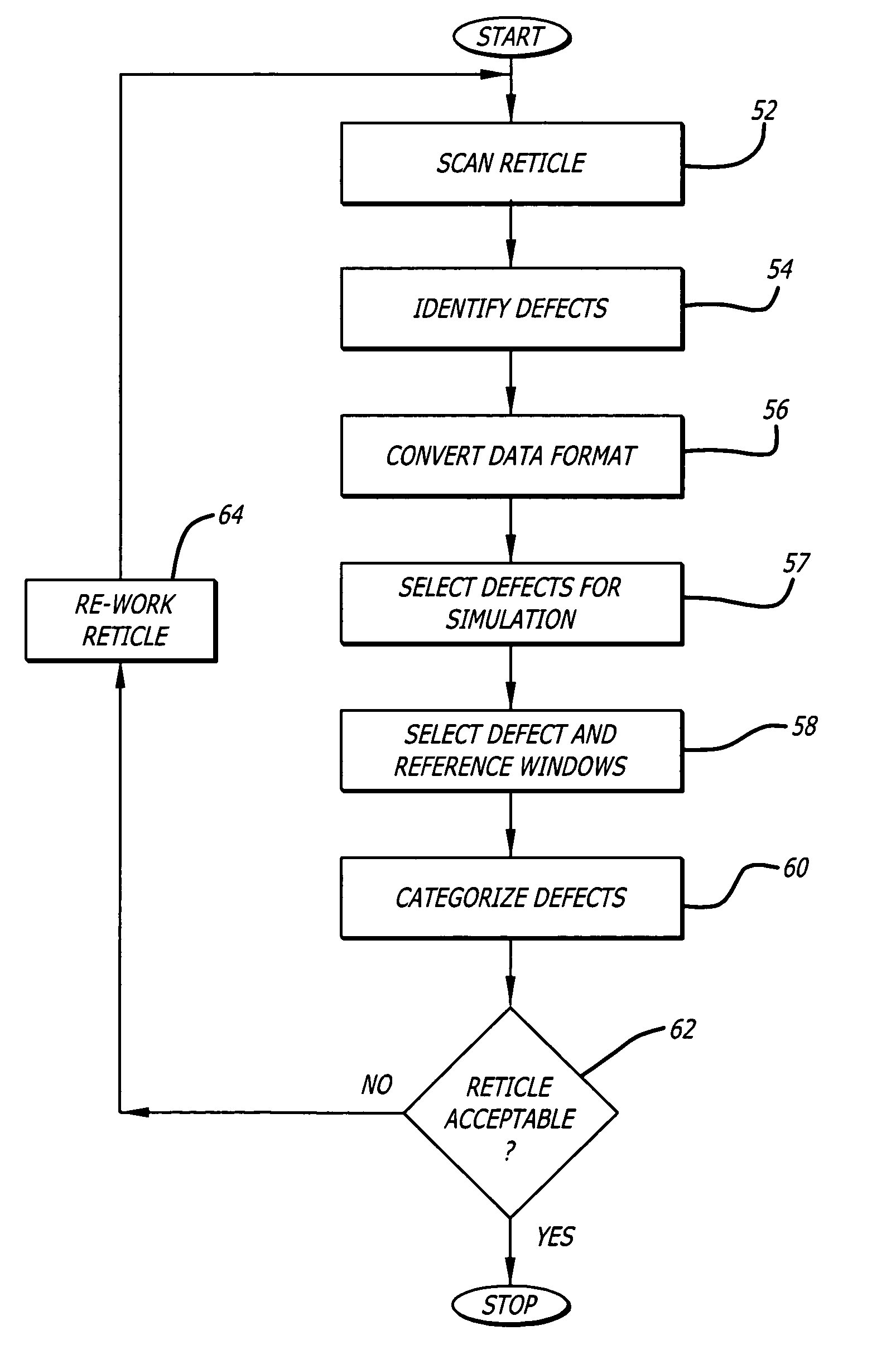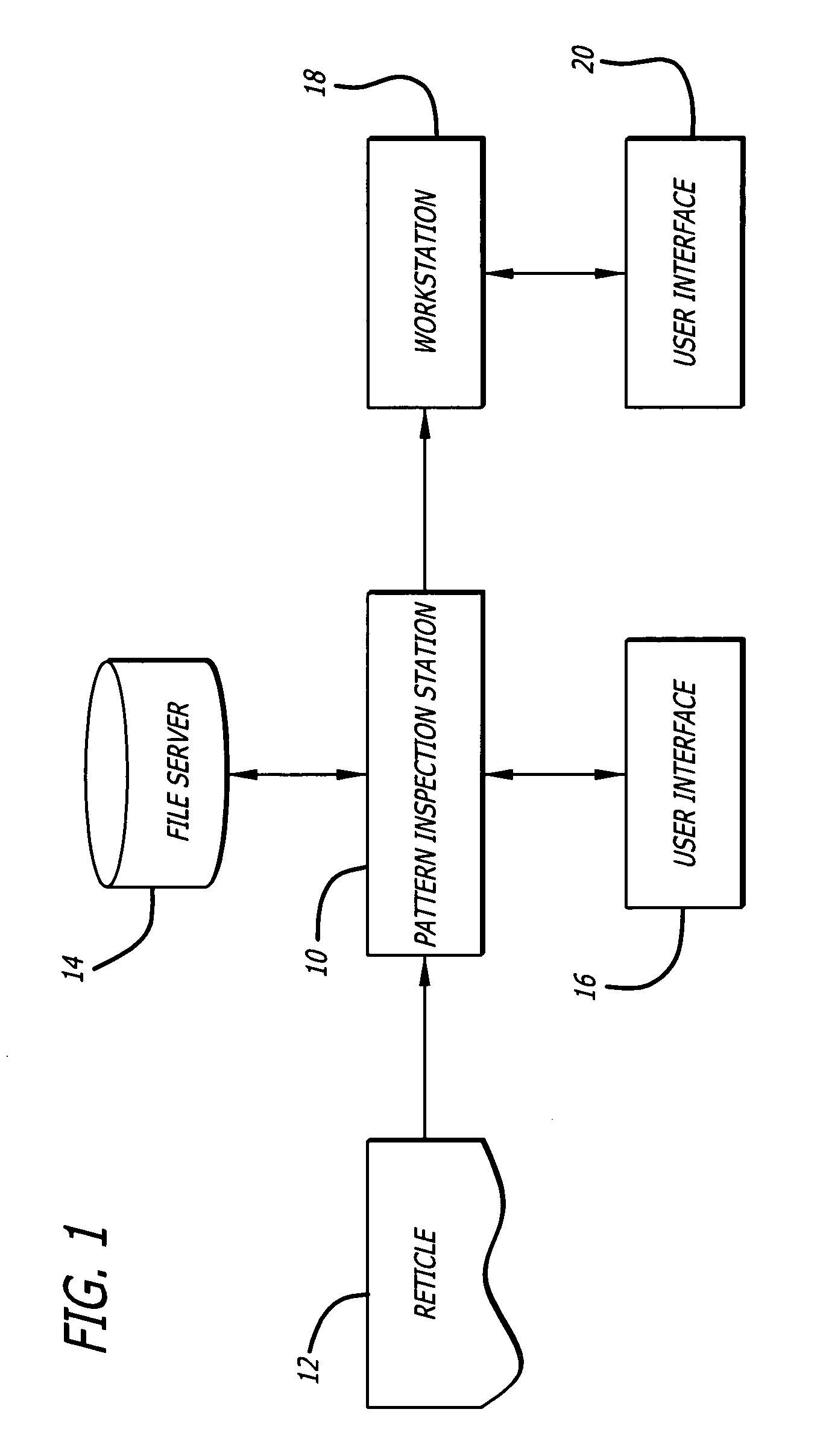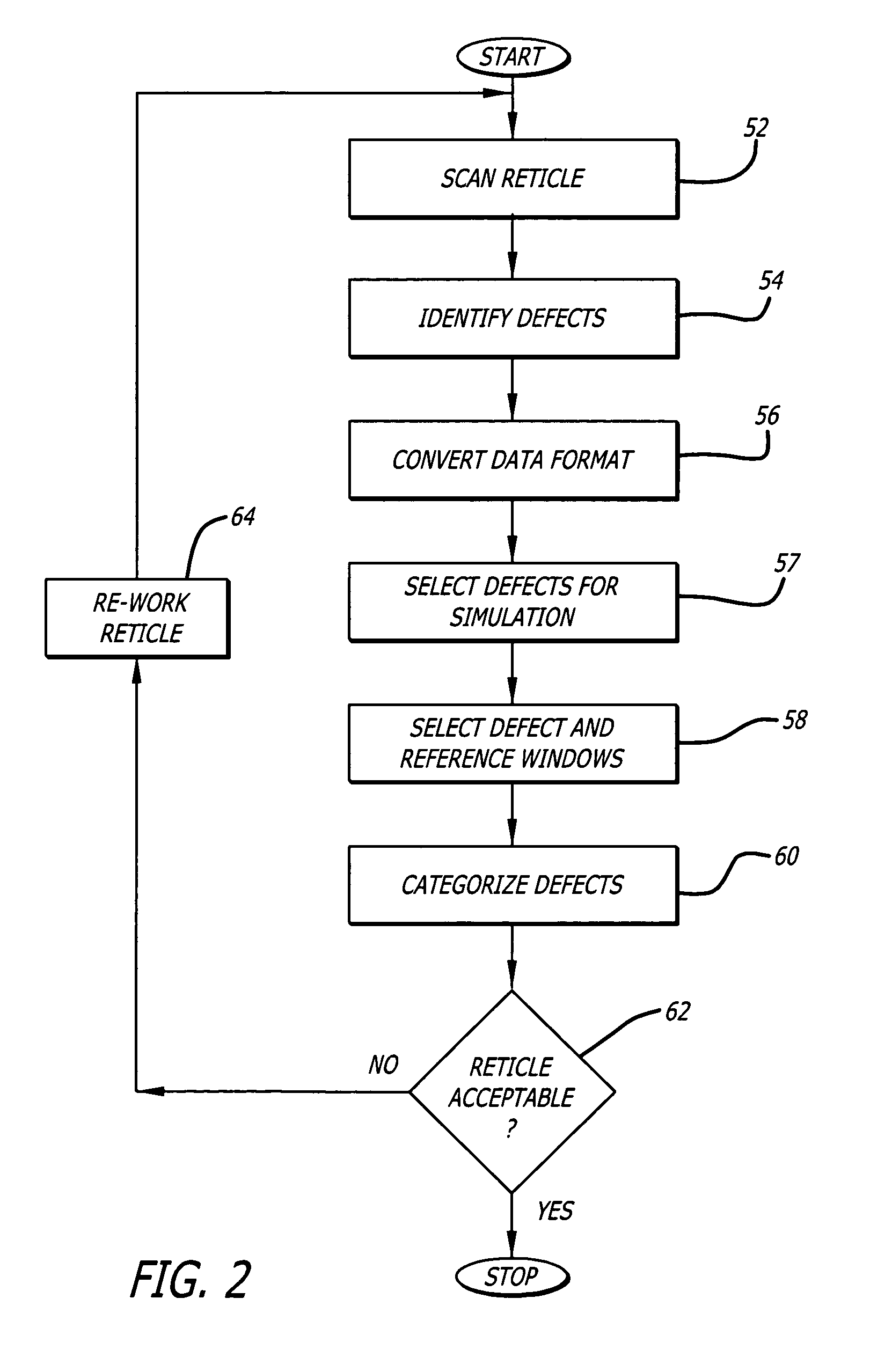Reticle defect detection using simulation
a technology of defect detection and simulation, applied in the field of retinal defect detection, can solve the problems of not providing much information to determine the printability of defects, affecting the lithography process, and itself not providing sufficient information, so as to reduce the probability of operator error, reduce the required simulation processing, and reduce delays and costs
- Summary
- Abstract
- Description
- Claims
- Application Information
AI Technical Summary
Benefits of technology
Problems solved by technology
Method used
Image
Examples
Embodiment Construction
[0028]FIG. 1 illustrates a block diagram of a system implementing the present invention. Included in the system shown in FIG. 1 is a pattern inspection station 10, such as KLA-Tencor 200 or 300 series pattern inspection station. Included within pattern inspection station 10 is a scanner for inputting digital images of reticles, such as a reticle 12. Pattern inspection station 10 also includes program inspection steps for identifying defects, as defined in more detail below.
[0029]Connected to pattern inspection station 10 is file server 14, such as a KLA-Tencor 9X file server, for storing and retrieving image data files and program instruction steps. Also connected to pattern inspection station 10 is a user interface 16 which includes input devices such as a mouse and keyboard and output devices such as a CRT monitor and laser printer.
[0030]Under the control of inputs from user interface 16, as described in more detail below, pattern inspection station 10 transfers data files to work...
PUM
 Login to View More
Login to View More Abstract
Description
Claims
Application Information
 Login to View More
Login to View More - R&D
- Intellectual Property
- Life Sciences
- Materials
- Tech Scout
- Unparalleled Data Quality
- Higher Quality Content
- 60% Fewer Hallucinations
Browse by: Latest US Patents, China's latest patents, Technical Efficacy Thesaurus, Application Domain, Technology Topic, Popular Technical Reports.
© 2025 PatSnap. All rights reserved.Legal|Privacy policy|Modern Slavery Act Transparency Statement|Sitemap|About US| Contact US: help@patsnap.com



